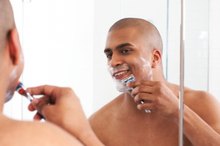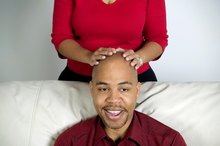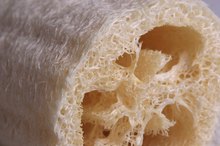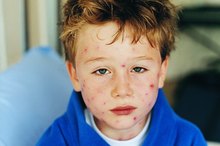What does fact checked mean?
At Healthfully, we strive to deliver objective content that is accurate and up-to-date. Our team periodically reviews articles in order to ensure content quality. The sources cited below consist of evidence from peer-reviewed journals, prominent medical organizations, academic associations, and government data.
The information contained on this site is for informational purposes only, and should not be used as a substitute for the advice of a professional health care provider. Please check with the appropriate physician regarding health questions and concerns. Although we strive to deliver accurate and up-to-date information, no guarantee to that effect is made.
How to Get Rid of Razor Bumps Around the Buttocks
Razor bumps are caused by irritation and ingrown hairs that develop as a result of shaving. An ingrown hair occurs when it is shaved short and turns back into the skin. Any area of the body that is shaved is susceptible to razor bumps, including the buttocks. There are several ways to treat razor bumps, but it is also important to take steps to prevent them in the future by improving shaving techniques. Consult a healthcare professional for persistent bumps or razor bumps that bleed or ooze pus. This can be a sign of infection that needs treatment.
Wash the area with an antibacterial body soap, including bar soap, in the shower and prior to treatment. The razor bump can become infected with bacteria, making the problem harder to treat.
Can You Use Baking Soda for Itching Skin?
Learn More
Rub the area gently with a clean, wet wash cloth or body loofah and warm water. This will help exfoliate dead or loose skin, encouraging an ingrown hair to come out.
Soak a cotton ball in witch hazel. Rub the razor bumps with this natural astringent to aid in healing and reduce some itching if it exists.
How to Treat Infected Hair Follicles
Learn More
Let the astringent dry a few seconds before applying a thin layer of hydrocortisone cream to the bumps. Hydrocortisone cream works as a short-term itch reliever. The cream can also reduce inflammation.
Apply a thin layer of antibiotic cream over the razor bump to fight infection and to help heal the ailment.
Repeat the topical treatment once per day for up to four days or as indicated by the hydrocortisone and antibiotic cream tube. If the bump persists beyond a week, consult a healthcare professional.
Avoid shaving the area while treating the bumps 4. Clean the razor with a cotton ball wet with rubbing alcohol, or purchase a new razor. Bacteria my have built up on the razor, resulting in more frequent razor bumps.
Tips
Prevent future razor bumps by wetting the skin with warm water and applying a shave gel, lotion or cream. Shave in the direction of hair grown instead of against it to reduce irritation. Go over the skin as few times as possible, as repeatedly shaving an area increases irritation.
Warnings
Pus or bleeding can indicate bacterial or fungal infection. It can also indicate folliculitis. These conditions may require over-the-counter or prescription treatment, such as an antibiotic or antifungal medication, to cure. Consult a healthcare professional for advice when these symptoms exist.
Related Articles
References
- TeensHealth from Nemours: Hair Removal
- MedlinePlus: Hair Problems
- DermNetNZ: Folliculitis
- TeensHealth from Nemours: Shaving
- American Academy of Dermatology: Men's Skin Care
- Gray J, McMichael AJ. "Pseudofolliculitis Barbae: Understanding the Condition and the Role of Facial Grooming." International Journal of Cosmetic Science. 2016;38 Suppl 1:24-27.
- Zaenglein AL, Pathy AL, Schlosser BJ, Alikhan A., Baldwin HE, Berson D, et. al. "Guidelines of Care for the Management of Acne Vulgaris." Journal of the American Academy of Dermatology. 2016;74(5):945-973.
Writer Bio
Sarah Harding has written stacks of research articles dating back to 2000. She has consulted in various settings and taught courses focused on psychology. Her work has been published by ParentDish, Atkins and other clients. Harding holds a Master of Science in psychology from Capella University and is completing several certificates through the Childbirth and Postpartum Professional Association.








